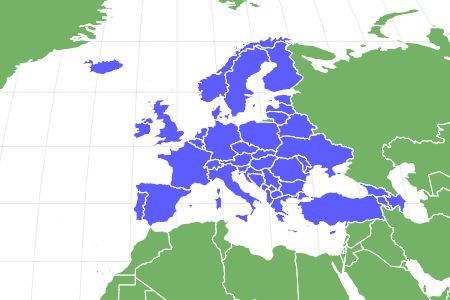Chamois
Rupicapra rupicapra
Natively found in the European mountains!
Advertisement
Chamois Scientific Classification
- Kingdom
- Animalia
- Phylum
- Chordata
- Class
- Mammalia
- Order
- Artiodactyla
- Family
- Bovidae
- Genus
- Rupicapra
- Scientific Name
- Rupicapra rupicapra
Read our Complete Guide to Classification of Animals.
Chamois Conservation Status
Chamois Facts
- Average Litter Size
- 1
- Lifestyle
- Herd
- Favorite Food
- Grass
- Type
- Mammal
- Slogan
- Natively found in the European mountains!
View all of the Chamois images!
The chamois is a small, hoofed animal that is a goat antelope species.
It is native to Asia Minor and the Eastern, Central, and Western European mountains at moderately high altitudes, and it was introduced to New Zealand. The pronunciation of its name resembles that of the French, while the pronunciation of its name as leather is based on “chamy” or “shammy.” Some subspecies of this bovid are having protection under the EU’s European Habitat Directive.
5 Incredible Chamois Facts!
- The chamois is in the goat-antelope subfamily, the same as goats and sheep.
- It looks like an unusual goat.
- They can jump almost 2 meters (6.5 feet) high and a minimum of 6 meters (19.5 feet) in length, and can run as fast as 50 km/h (31 mph) on uneven ground.
- Chamois or shammy cloth can also refer to split sheepskin or lambskin tanned with fish oil. Alternately, it can be made of synthetic PVA.
- Shammy cloth is absorbent and sponge-like, featuring a soft texture that is used for car cleaning, drying, polishing, and detailing surfaces, as well as a blending tool by artists blending charcoal.
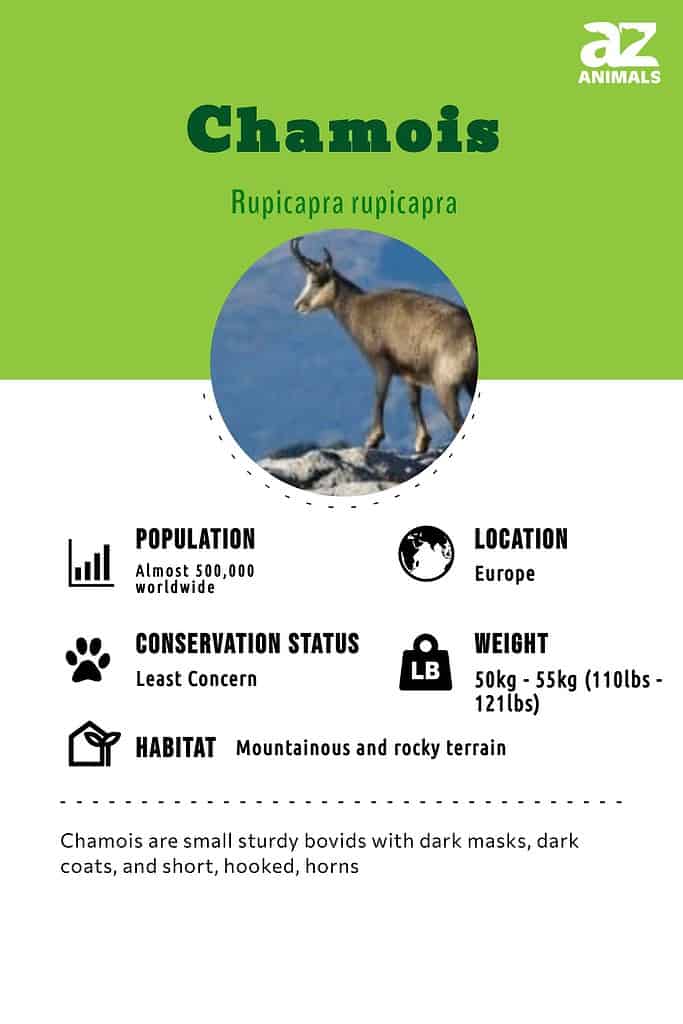
Scientific Name
The chamois is an animal in the family Bovidae which includes cloven-hoofed, ruminant vertebrates such as the bison, American buffalo, water buffalo, antelope, sheep, goats, muskoxen, and domestic cattle. It is further classified into the goat antelope subfamily Caprinae, which contains medium-sized bovids. Called a caprine or goat antelope, it is not a true antelope, which is classed as either cervid-like (true deer in the family Cervidae) or antilocaprid-like (even-toed ungulates in the order Artiodactyl, with their closest relatives being in the superfamily Giraffoidea).
There are two species in the genus Rupicapra, R. rupicapra and R. pyrenaica. Its synonym is the former scientific name Capra rupicapra. The type species R. rupicapra contains 7 subspecies.
Appearance
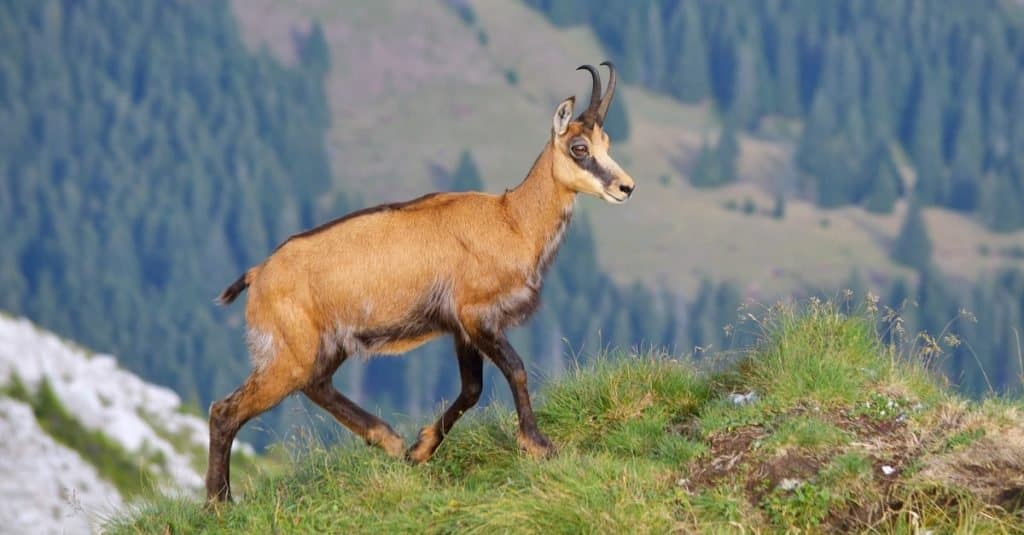
Male chamois are larger than females and are capable of reaching 132 lbs
©Real PIX/Shutterstock.com
The subspecies of the Rupicapra genus differ by habitat range and certain physical traits, such as color. However, they are all very small bovids. Fully grown adult chamois reach 70–80 cm (28–31 in) in height and 107–137 cm (42–54 in) in length. Males are somewhat larger than females. Both genders have a weight range of 30–60 kg (66–132 lb) and 25–45 kg (55–99 lb), respectively.
Both sexes have short, mostly straight horns which curve backward near the tip, with male horns being thicker. Both have rich brown fur which turns into a light chestnut color in spring and summer and long, light grey guard hairs in winter. They have white a long black or brown band from each side of the muzzle to the eyes and ears, white on the rest of the head and throat for contrast, a white rump, and a black stripe along the back. Their hooves are excellent for gripping slippery rock. The tail is not usually visible except when mating.
Types
The 7 subspecies of R. rupicapra have different habitat ranges including:
- R. r. asiatica (Anatolian chamois or Turkish chamois): Turkey
- R. r. balcanica (Balkan chamois): Albania, Bosnia and Herzegovina, Bulgaria, Croatia, northern Greece (the Pindus Mountains), North Macedonia, Serbia, Montenegro, and Slovenia
- Abruzzo chamois (R. p. ornata): The Gran Sasso mountain
- R. r. carpatica (Carpathian chamois): Romania
- R. r. cartusiana (Chartreuse chamois): France
- R. r. caucasica (Caucasian chamois): Azerbaijan, Georgia, Russia
- R. r. rupicapra (Alpine chamois): Austria, France, Germany, Italy, Switzerland, Slovenia, Slovakia (Veľká Fatra, Slovak Paradise)
- R. r. tatrica (Tatra chamois): Slovakia (Tatras and Low Tatras) and Poland (Tatras)
Evolution
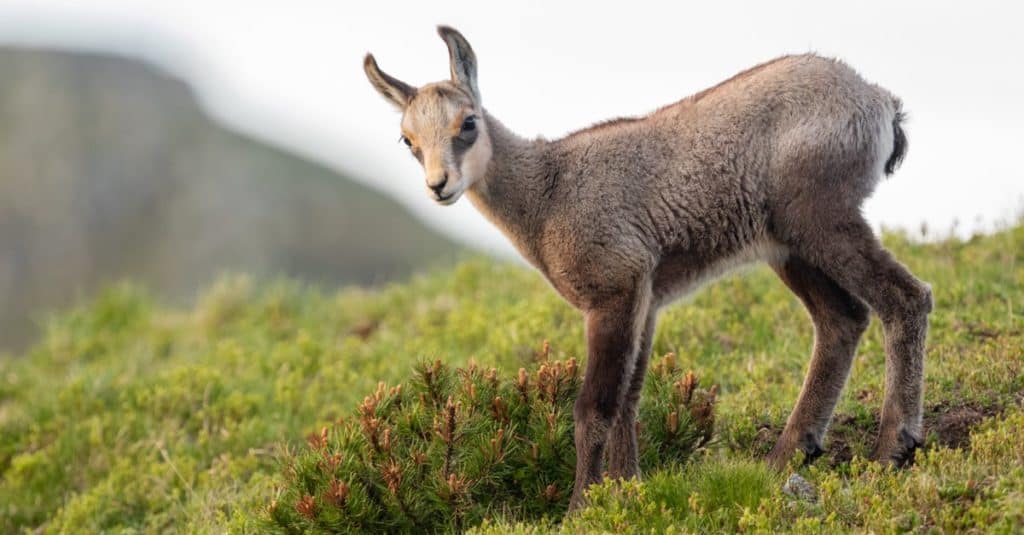
The ancestor of the chamois is believed to have emerged during the Miocene
©Peter Bino Wild Nature/Shutterstock.com
As a member of the tribe Caprini, chamois occupy a somewhat unique position since they are goat-antelopes. They are also related to goats and sheep and the earliest ancestor of the tribe is believed to have appeared during the Miocene about 5.333 – 23 million years ago.
Scientists believe that it was pretty similar to the medium-sized members of the genus Capricornis, serows. During the latest ice ages, this group experienced the greatest diversity it had ever known. It was during these periods that its members received the qualities which enabled different species to be capable of living in harsh climates of extreme cold or extreme heat and drought.
Behavior
Chamois are mostly diurnal animals but can be active at night. Adult males lead solitary lives for most of the year, while female chamois and their young live in hers of 15-30 individuals. Chamois give a warning call of danger by stamping their feet and making a whistling sound. When alarmed or threatened, they flee to the most inaccessible heights, often by making amazing leaps.
Habitat
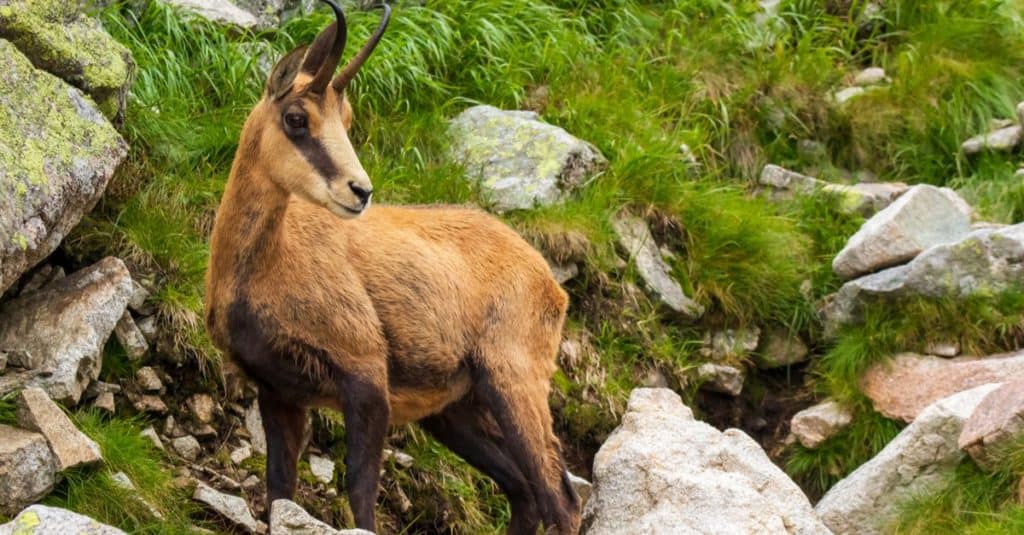
Chamois live in mountain ranges such as the Alps, Apennines, Carpathians, and the Pyrenees
©Michal Blaho/Shutterstock.com
The habitat of the chamois is the moderately high, very steep, rugged, and rocky mountains of Europe and Asia Minor. It prefers alpine and subalpine meadows above the timberline and both fairly steep and flatter terrain, moving into forested areas and steep slopes during the winter to avoid the accumulation of snow. The animal is often found at elevations with a minimum height of 3,600 m (11,800 ft), moving to areas predominated by pine trees in lower elevations of around 800 m (2,600 ft) in the winter
The chamois’ native habitat range includes the Alps, Pyrenees, Carpathians, Tatra Mountains, the Balkans, parts of Turkey, the Caucasus, and the Apennines. It was introduced into the South Island of New Zealand.
The other species of the chamois, R. pyrenaica (Pyrenean chamois) live in the Pyrenees, the Cantabrian Mountains, and the Apennine Mountains.
Diet
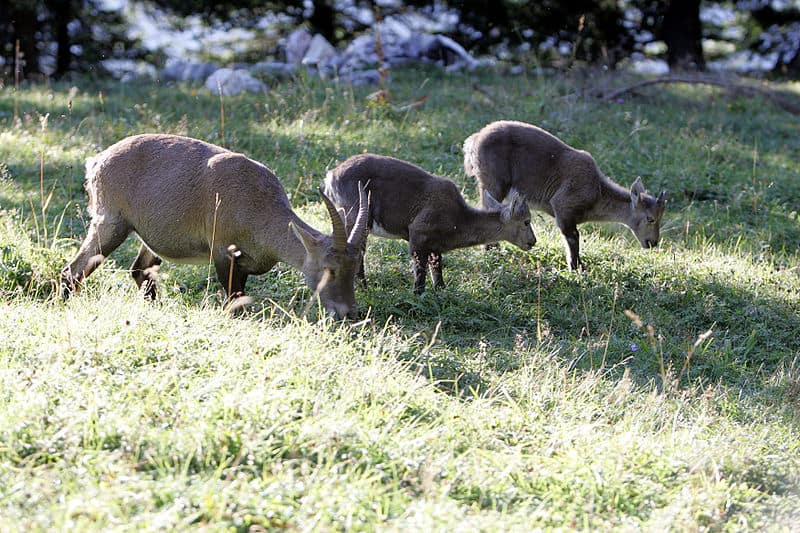
Chamois are capable of going without food for a fortnight
The chamois has an herbivorous diet. It eats mainly grasses, herbs, and flowers in the summer, and lichens, mosses, barks, needles, and young pine shoots in the winter. When the snow is so deep that it cannot find food, it has been known to fast for two weeks.
Predators and threats
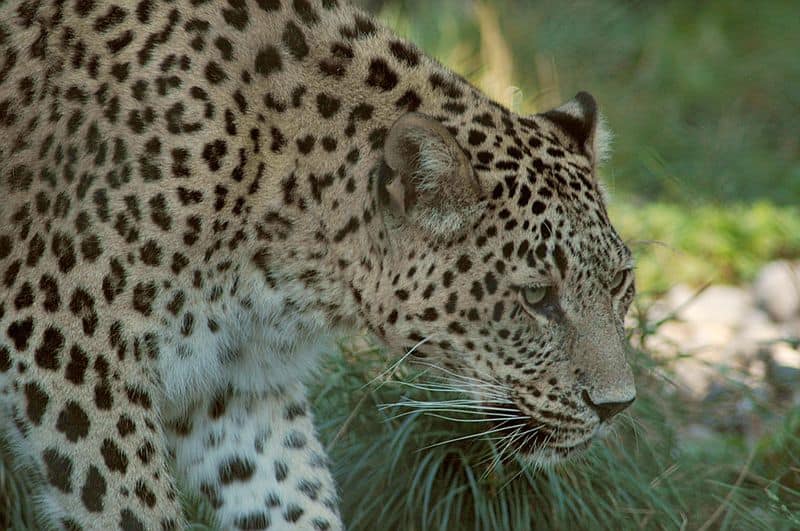
Persian Leopards are known to hunt chamois
The common predators of the chamois used to be grey wolves, Eurasian lynxes, and Persian leopards, as well as some brown bears and golden eagles. Humans have established themselves as their main predators, finding them to be popular game animals with tasty meat. Chamois is also used for the soft, pliable leather made from its skin. Common causes of mortality to chamois include the threats of avalanches, epidemics, human disturbance, competition with livestock for food and space, habitat loss, and hybridization with introduced subspecies. Poaching and overhunting are threats from human predation.
Reproduction, Babies, and Lifespan

Chamois’ gestation period lasts almost six months and a mother may give birth to twins occasionally
The mating season of the chamois is around late November/early December when males have fierce battles with each other for the attention of unmated females. It is during this time that the tails of both sexes are visible. Pregnant females have a gestation period of 170 days. A baby chamois is called a kid. Females give birth to a single kid or the occasional twins in May or early June.
If the mother dies, other females raise the kids. Kids are weaned at 6 months and are fully grown at one year, but they do not reach sexual maturity until 3-4 years of age, with some females ready to mate as early as 2 years old. Once the males reach sexual maturity, dominant males force them out of their mothers’ herds. They then wander nomadically until they establish themselves through breeding at 8-9 years.
Chamois typically live up to 22 years in captivity and 15-17 years in the wild.
Population

The worldwide population of chamois is just under 500,000
The latest estimated population of these animals in Europe is approximately 400,000. Since they were introduced into New Zealand in the 20th century due to environmental changes in their native habitat, their numbers rapidly increased to almost 100,000 by the 1970s and they threatened the local vegetation. Since then, the chamois population has decreased by about 20,000.
According to the IUCN Red List, the northern chamois populations have a status of least concern and are remaining stable. The southern chamois populations also have the same status and increasing.
In the Zoo
These animals are difficult to house in zoos, instead of being a common captive species in a number of game parks and nonscientific institutions in Europe. However, it can be seen at the Toronto Zoo and the Munich Zoo Hellabrunn.
View all 235 animals that start with CChamois FAQs (Frequently Asked Questions)
Are Chamois herbivores, carnivores, or omnivores?
Chamois are Herbivores, meaning they eat plants.
What Kingdom do Chamois belong to?
Chamois belong to the Kingdom Animalia.
What phylum do Chamois belong to?
Chamois belong to the phylum Chordata.
What class do Chamois belong to?
Chamois belong to the class Mammalia.
What family do Chamois belong to?
Chamois belong to the family Bovidae.
What order do Chamois belong to?
Chamois belong to the order Artiodactyla.
What genus do Chamois belong to?
Chamois belong to the genus Rupicapra.
What type of covering do Chamois have?
Chamois are covered in fur.
In what type of habitat do Chamois live?
Chamois live in mountainous and rocky terrains.
What is the main prey for Chamois?
Chamois eat grass, leaves, and shrubs.
What are some predators of Chamois?
Predators of Chamois include humans, wolves, and wildcats.
What are some distinguishing features of Chamois?
Chamois have black and white face markings and backward curving horns.
How many babies do Chamois have?
The average number of babies a Chamois has is 1.
What is an interesting fact about Chamois?
Chamois are natively found in the European mountains!
What is the lifespan of a Chamois?
Chamois can live for 18 to 22 years.
How fast is a Chamois?
A Chamois can travel at speeds of up to 10 miles per hour.
What is a chamois?
A chamois is a very small bovid in the goat-antelope subfamily.
How do you pronounce Chamois?
“Chamois” closely follows the French pronunciation when referring to the animal and the English “shammy” when referring to the cloth made either of the animal’s leather, lambskin or sheepskin tanned with fish oil, or synthetic PVA.
What does a chamois look like?
A chamois looks like an unusual goat.
Are chamois carnivores, herbivores or omnivores?
Chamois are herbivores.
What do chamois eat?
Chamois eat herbs, grasses, and flowers during the summer and lichens, mosses, and conifers during the winter.
How tall is a chamois animal?
Chamois is between 70–80 cm (28–31 in) in height.
How to say Chamois in ...
Thank you for reading! Have some feedback for us? Contact the AZ Animals editorial team.
Sources
- Animalia, Available here: http://animalia.bio/chamois
- Wikipedia, Available here: https://en.wikipedia.org/wiki/Chamois
- Just Fun Facts, Available here: http://justfunfacts.com/interesting-facts-about-chamois/

